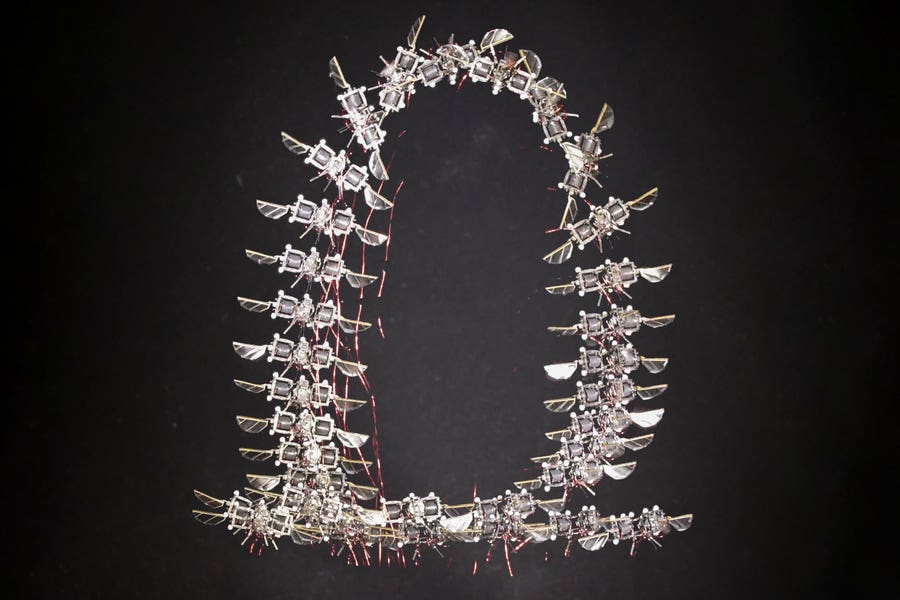Breakthrough discovery offers new hope for treatment of memory loss due to Alzheimer’s
UVA scientists link STING to Alzheimer’s brain damage, offering new hope for treatment of dementia and memory loss.

A molecule known as STING may drive brain damage in Alzheimer’s. Blocking it could open a path to powerful new treatments. (CREDIT: Adobe Stock)
A new understanding of Alzheimer’s disease is shaking up what many believed about how this devastating illness takes hold. Once thought to be driven only by toxic plaque buildup and dying neurons, it now appears that the immune system may be a powerful force in the brain’s decline—and may hold the key to slowing or stopping it.
Researchers at the University of Virginia School of Medicine have taken a bold step in this direction. Their latest study shines a spotlight on an immune molecule known as STING, short for stimulator of interferon genes. While STING plays a helpful role in fighting infections and keeping damaged cells in check, it may also turn against the brain during aging, contributing to Alzheimer’s and other forms of dementia.
The Brain’s Defenders Turn Dangerous
Normally, the immune system protects the brain. A group of cells called microglia constantly patrol for threats. These cells respond to pathogens, clean up debris, and help maintain balance. But in Alzheimer’s, something goes wrong. Instead of helping, the immune system appears to fuel inflammation and worsen damage.
STING, a key part of this response, is activated when DNA—either from viruses or damaged cells—leaks into the cytosol, a part of the cell where it doesn’t belong. This triggers a cascade of chemical signals that include the release of type I interferons and inflammatory molecules like IL-6 and TNF-α. These molecules can fight infections but also trigger harmful inflammation when left unchecked.
This pathway, known as cGAS-STING signaling, has already been linked to several autoimmune and neurodegenerative diseases. In fact, studies show that knocking down STING or its partner cGAS in lab models of ALS, Parkinson’s, and age-related dementia reduces nerve cell loss and calms inflammation.
Now, the UVA team has extended these insights to Alzheimer’s. Their research, recently published in Alzheimer’s & Dementia: The Journal of the Alzheimer’s Association, shows how removing STING from genetically modified mice protects their brains and helps preserve memory.
Related Stories
Alzheimer’s Under the Microscope
The researchers used a mouse model known as 5xFAD, which is often used to study Alzheimer’s because it rapidly develops amyloid beta plaques and memory problems. In this study, mice were bred to lack the STING gene. What happened next was remarkable.
Mice without STING had fewer plaques, reduced inflammation, and fewer damaged nerve structures near the plaques. Microglia, the brain’s immune cells, were calmer. Even more promising, these mice performed better on memory tests than those with normal STING levels.
Jessica Thanos, one of the study’s lead authors from UVA’s Department of Neuroscience and Center for Brain Immunology and Glia, explained the results. “We found that removing STING dampened microglial activation around amyloid plaques, protected nearby neurons from damage and improved memory function in Alzheimer’s model mice,” she said.
Their research also revealed something even more interesting. Without STING, brain cells showed a shift in gene activity. Genes tied to inflammation were dialed down, while genes linked to healthy brain signaling and memory were turned up. In other words, blocking STING not only stopped damage—it helped restore balance.
Aging and Immune Overdrive
John Lukens, PhD, who led the study and directs the Harrison Family Translational Research Center in Alzheimer’s and Neurodegenerative Diseases at UVA, believes this could help explain why aging is the biggest risk factor for Alzheimer’s.
“The DNA damage that naturally accumulates during aging triggers STING-mediated brain inflammation and neuronal damage in Alzheimer’s disease,” Lukens said. Over time, damage builds in brain cells. This damage activates STING, which may start a harmful cycle of inflammation, neuron loss, and cognitive decline.
The idea that a natural defense mechanism can become destructive with age isn’t new. But this research provides strong evidence that STING could be a central piece of the Alzheimer’s puzzle. It might even explain why certain immune genes are linked to higher Alzheimer’s risk.
A Path Toward New Treatments
The findings are especially important because they point to STING as a promising drug target. Blocking STING could calm harmful brain inflammation, reduce toxic protein buildup, and support neuron health—all at once.
That’s something current treatments can’t do. Most drugs under development focus on either amyloid plaques or tau tangles, the two major hallmarks of Alzheimer’s. But many have shown only limited benefits. STING stands out because of its broader role.
Pharmaceutical companies have already developed experimental drugs that target STING, including one called H-151. While early results are encouraging, this drug has some off-target effects. That’s why the UVA researchers focused on genetic deletion in mice, a method that allowed them to isolate STING’s exact role without the drug’s added complications.
More research will be needed before this discovery leads to approved treatments. Scientists still have to understand STING’s full role in the immune system. It helps fight cancer and infections, so blocking it too broadly could backfire. But the new findings offer a roadmap for future therapies that target STING carefully and precisely.
“If we can pinpoint which cells and signals sustain that activation,” said Thanos, “we will be in a much better position to intervene effectively in disease.”
A New Era in Alzheimer’s Research
With more than 7 million Americans already affected, Alzheimer’s is one of the most pressing health crises of our time. That number could rise to over 13 million by 2050, putting massive strain on families, healthcare systems, and communities.
For decades, the search for answers focused mostly on the plaques and tangles found in patients’ brains. But those are only part of the story. The brain’s immune system—particularly microglia and STING—may hold the missing piece.
By revealing how STING drives inflammation, neuron loss, and memory decline, Lukens and his team have opened a new chapter in the fight against Alzheimer’s. Their work suggests that the immune system isn’t just a bystander in the disease—it may be a driver.
And that changes everything.
Note: The article above provided above by The Brighter Side of News.
Like these kind of feel good stories? Get The Brighter Side of News' newsletter.



